 What's in Your Pack? Make sure you are carrying what you need with our Safety Week checklist below. | Katie Lozancich photo.
What's in Your Pack? Make sure you are carrying what you need with our Safety Week checklist below. | Katie Lozancich photo.
One of the most common questions we get about safety here at TGR is “what do you guys carry into the field?” The answer, to be completely honest, is “it depends.” This year, instead of trying to figure out a one-size-fits-all approach to the question, we are going to split it up into a few scenarios. Bringing the right gear is about adapting, proper planning, and understanding what you’ll need in case of emergencies. Remember to communicate with your team members before heading out every morning to double check everyone is carrying what they need, and organize any gear like a first aid kit, shelter, or other group equipment accordingly.
The Absolute Basics:
-
Avalanche beacon
-
Avalanche shovel
-
Avalanche probe
-
Somewear Labs Global Hotspot satellite communicator + app on smartphone
-
OnX Backcountry mapping app installed on smartphone
-Simple First Aid Kit (SAM splint, bandage wrap, medications, bleeding control)
-Radio
-Simple Repair kit (4x ski straps, duct tape, baling wire, multitool)
-Water (1 liter)
-Snacks (500 calories of something you like that won’t freeze)
-Extra warm layers (puffy jacket and pants + extra gloves + buff)
-Headlamp
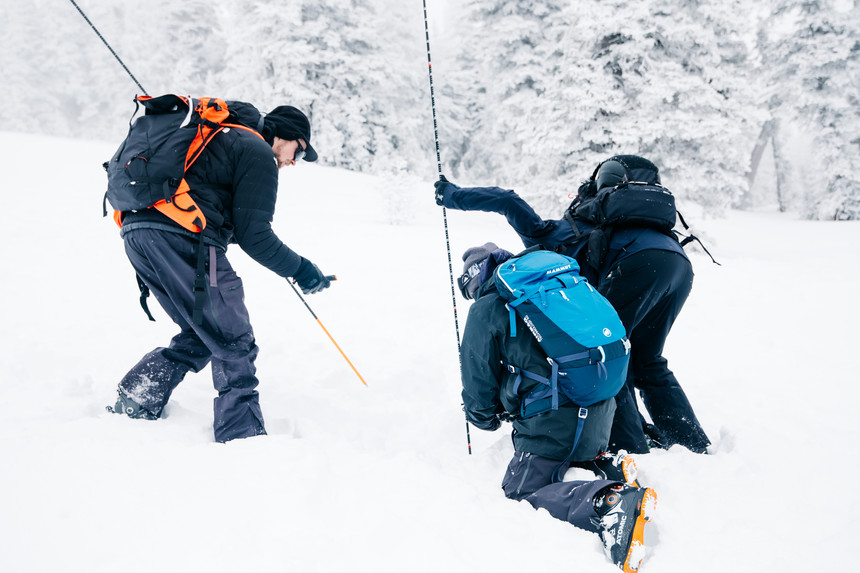 The most important part of your backcountry kit is your avalanche safety gear. | Katie Lozancich photo.
The most important part of your backcountry kit is your avalanche safety gear. | Katie Lozancich photo.
This is the absolute most basic kit you should ever carry if you are planning on entering the backcountry, and is what our athletes and crew carry every single day in the field, whether it’s going for a short ski tour or lapping the sidecountry. The Somewear Labs Global Hotspot pairs with your smartphone to enable two-way satellite communication, location tracking, weather reports and an SOS button anywhere in the world – we use it to check in with our athletes throughout a shoot day and in the case of an emergency. OnX Backcountry's powerful mapping app is also indispensable for a day in the field, giving you the ability to navigate, check slope angles, and scope unknown lines.
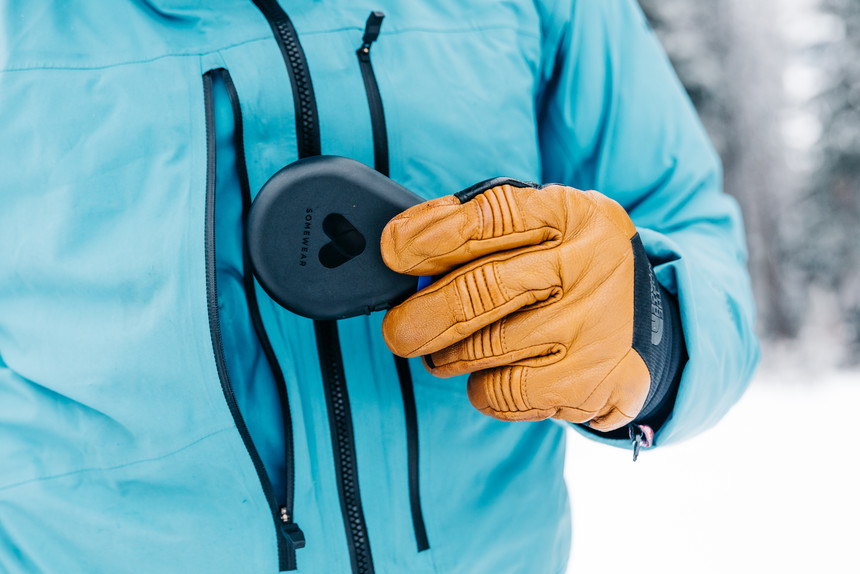 Carrying a satellite communication device like that from Somewear Labs can make calling for help much easier. | Katie Lozancich photo.
Carrying a satellite communication device like that from Somewear Labs can make calling for help much easier. | Katie Lozancich photo.
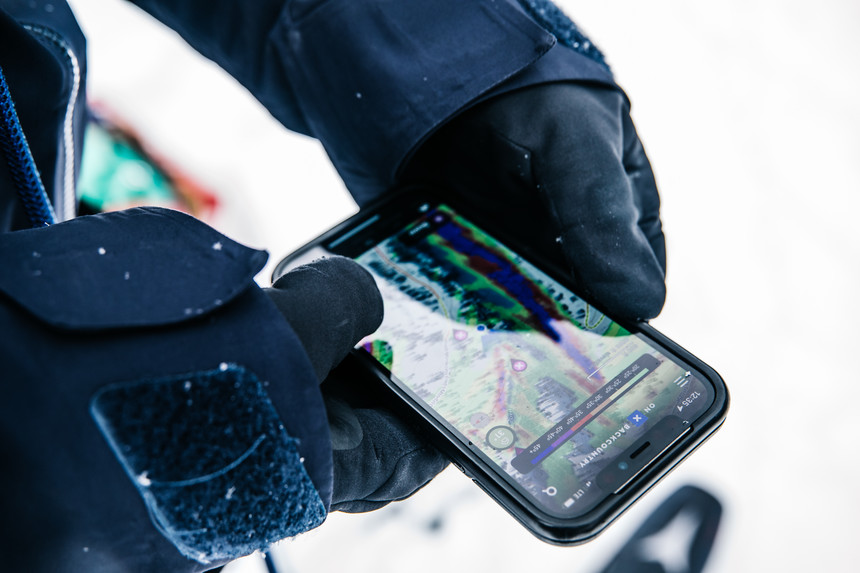 OnX Backcountry's powerful smartphone app is an easy way to figure out slope angles and navigate unknown terrain. | Katie Lozancich photo.
OnX Backcountry's powerful smartphone app is an easy way to figure out slope angles and navigate unknown terrain. | Katie Lozancich photo.
When traveling in the backcountry, we always carry a simple first aid/gear repair kit and basic avalanche rescue equipment, like Mammut’s Barryvox S beacon and a Mammut shovel and probe. Food and water are easy to forget, but we recommend carrying at least one liter of water and 500 calories of snacks (choose what you like to eat, just make sure you can still eat it if it freezes). You should still be self-sufficient when traveling close to civilization, but know that calling for help will likely be your fastest way to safety if something goes wrong.
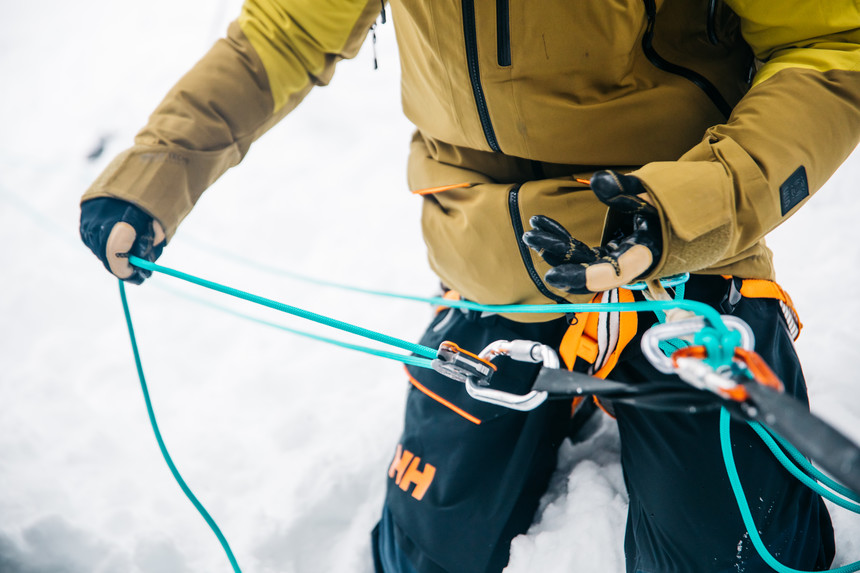 When traveling through complex terrain in big mountains, carrying a lightweight rope, harness and a crevasse rescue kit is vital. | Katie Lozancich photo.
When traveling through complex terrain in big mountains, carrying a lightweight rope, harness and a crevasse rescue kit is vital. | Katie Lozancich photo.
Foot-Powered Big Mountain Missions
-The Absolute Basics
-Rescue tarp/shelter
-Fire Starting kit (lighter/flint, cotton or steel wool)
-Advanced First Aid Kit
-Glacier gear (lightweight harness, glacier rope, crevasse rescue kit)
-Mountaineering gear (crampons, ice axe, protection)
When our athletes go deeper into the backcountry, the know that they are going out of reach of a quick rescue response if something does go wrong. Of course, weight is of a concern for athletes moving through complex terrain and film crews already carrying extra camera gear. Finding a balance between bringing enough to be safe but not be so weighed down you cant complete your objective is a challenge, but modern equipment has made that much easier. We always carry at least one lightweight rescue tarp per team that will make transporting an incapacitated team member to safety possible. The rescue tarp can double as an emergency shelter if you need to spend the night out or a storm comes in. Depending on the objective when traveling in big mountains, we will carry mountaineering gear and glacier gear to facilitate crevasse rescue and rappelling if necessary.
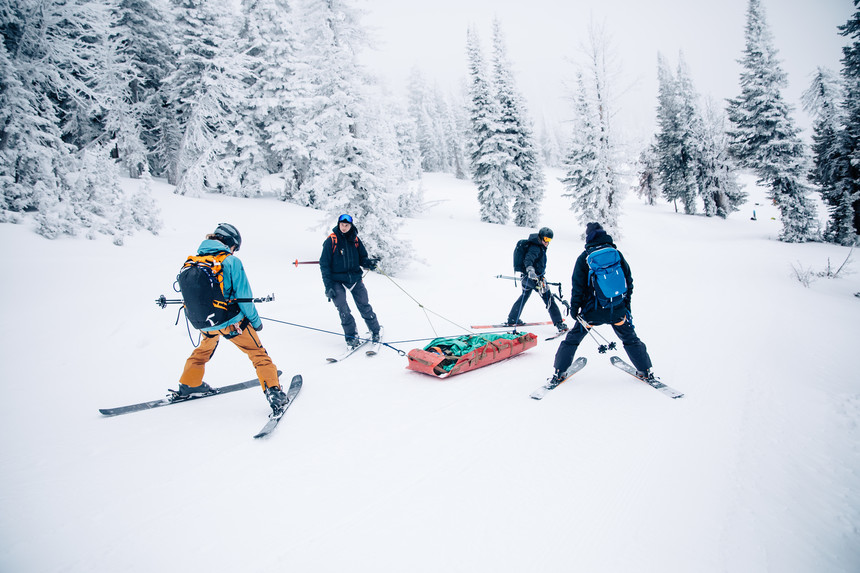 Snowmobiles and helicopters can get us to the most remote places, but that also means help can be very far away - that's why we will bring a heavy-duty rescue stretcher like a Med Sled on mechanized missions where weight is less of a concern. | Katie Lozancich photo.
Snowmobiles and helicopters can get us to the most remote places, but that also means help can be very far away - that's why we will bring a heavy-duty rescue stretcher like a Med Sled on mechanized missions where weight is less of a concern. | Katie Lozancich photo.
Mechanized Big Mountain Missions
-The Absolute Basics
-Overnight gear (sleeping bags+tent)
-Basic snowmobile repair kit (spare belt, spare spark plug, spare fuel hose, tool kit, tow rope)
-
Med Sled stretcher
The nice thing about mechanized access to the big mountains, whether it's via helicopter, snowcat, or snowmobile, is that weight is not usually an issue. While snowmobiling or heli skiing brings its own set of inherent hazards, carrying extra gear like a full rescue stretcher, overnight gear and a more comprehensive repair kit is much easier.



maharma
January 29th, 2022
This is really amazing post about security but you would need of it alsoCheat Droid APK Download latest version Cheats and games
TRADE RAISE
January 31st, 2022
Trade Raise is one of the most transparent B2B marketplace connecting buyers, sellers and wholesalers under one roof. Make your brand visible and get more valuable leads with us
vikaskumar
May 12th, 2022
this is a realy well wriiten artiucle
emmawatsan22
August 7th, 2022
Thanks for sharing valuable information. It’s a very helpful article.
M and P Tracking